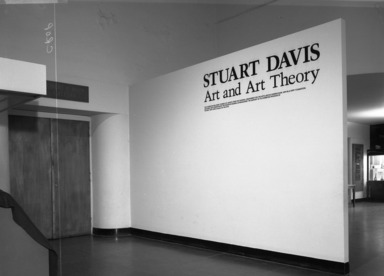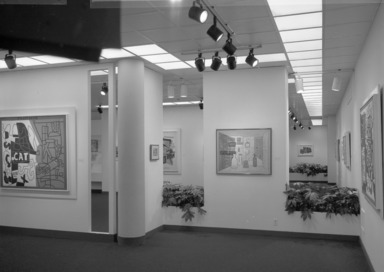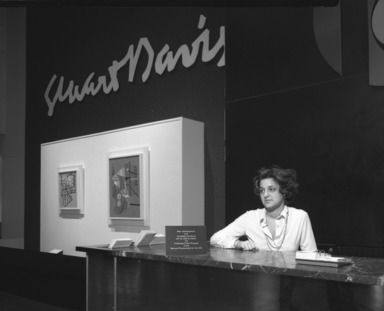

Stuart Davis: Art and Art Theory, January 21, 1978 through March 19, 1978 (Image: PHO_E1978i001.jpg Brooklyn Museum photograph, 1978)

Stuart Davis: Art and Art Theory, January 21, 1978 through March 19, 1978 (Image: PHO_E1978i002.jpg Brooklyn Museum photograph, 1978)
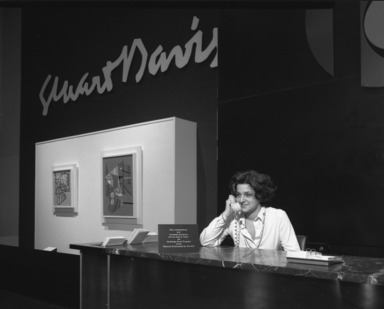
Stuart Davis: Art and Art Theory, January 21, 1978 through March 19, 1978 (Image: PHO_E1978i003.jpg Brooklyn Museum photograph, 1978)
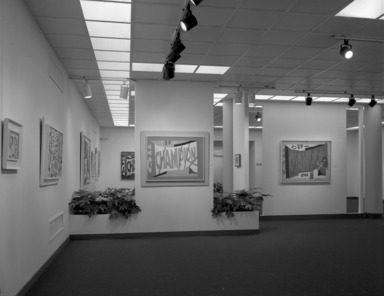
Stuart Davis: Art and Art Theory, January 21, 1978 through March 19, 1978 (Image: PHO_E1978i004.jpg Brooklyn Museum photograph, 1978)
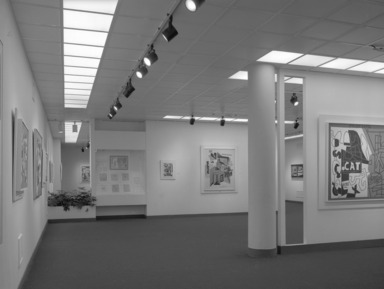
Stuart Davis: Art and Art Theory, January 21, 1978 through March 19, 1978 (Image: PHO_E1978i005.jpg Brooklyn Museum photograph, 1978)

Stuart Davis: Art and Art Theory, January 21, 1978 through March 19, 1978 (Image: PHO_E1978i006.jpg Brooklyn Museum photograph, 1978)
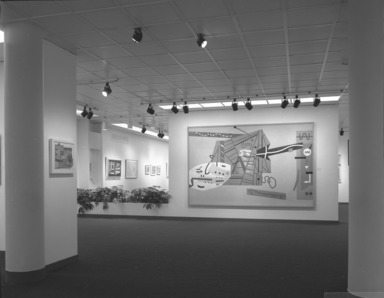
Stuart Davis: Art and Art Theory, January 21, 1978 through March 19, 1978 (Image: PHO_E1978i007.jpg Brooklyn Museum photograph, 1978)
Stuart Davis: Art and Art Theory
-
January 5, 1978
An exhibition re-evaluating the achievements, sources, and intentions of Stuart Davis (1994-1964), one of America’s leading modernist painters, will be held at The Brooklyn Museum, Eastern Parkway and Washington Avenue, from January 21 through March 19. Stuart Davis: Art and Art Theory consists of more than 100 works, including a large-scale mural and seventy of Davis’s most important paintings dating from every phase of his career. These major works are supplemented by oil, gouache, watercolor, and drawing studies, as well as by selections of pages of writings and sketches from the unpublished Stuart Davis Papers at the Fogg Art Museum. The exhibition was organized by Dr. John R. Lane, Executive Assistant to the Director of The Brooklyn Museum; Dr. Lane is also author of the book-length essay for the exhibiton catalogue.* The show will travel to the Fogg Art Museum, Harvard University, from April 15 through May 28, 1978.
“Stuart Davis," according to Dr. Lane, “was one of the few American artists whose career spanned every major movement of the first half of the twentieth century. Of these, cubism influenced him most profoundly....However, Davis injected his paintings with the spirit of American life by transforming Picasso’s mandolins and harlequins into gas pumps, cigarette packages, traffic beacons, and the rhythm and jargon of jazz. He became, for these reasons, a cultural hero to his contemporaries in the thirties and forties and an important influence for succeeding generations. His position as a key figure in modern American art came as the result of the sources he selected to draw upon from abroad and the link he established between the extreme poles of Ashcan School realism, the first modern American movement, and Abstract Expressionism the movement that brought American art to the forefront of international modernism.”
While Stuart Davis figures significantly in all histories of twentieth-century painting, no accounts have dealt with the artist’s passionate intellectual examination of the aesthetic, formal, philosophical, and political currents of modernism. Evidence of these inquiries exists in the more than 10,000 pages of unpublished journals and notes recently donated to the Fogg Art Museum by Davis’s widow. These writings are unsurpassed by any other artist’s for their bearing on the intellectual history of modern American art. In the thirteen years since the last major showing of Davis’s paintings, significant developments have occurred in the rethinking of this history. Stuart Davis: Art and Art Theory joins together this newly emerging sense of modernism with the unique availability of the Davis documents. The result is an exhibition generated from the fascinating juncture of the painter’s art and his ideas.
Stuart Davis was born in Philadelphia in 1894 to parents who were both artists. His mother was the sculptor Helen S. Foulke and his father, Edward W. Davis, a cartoonist and art editor of the Philadelphia Press. Some of the painters who were later to form the controversial American group called “The Eight” were employed by his father and were family friends, including William Glackens, George Luks, Everett Shinn, and John Sloan. Growing up in a stimulating environment in which discussion of artistic issues was an everyday occurrence, Davis enrolled in Robert Henri’s school in New York in 1909.
The exhibition considers the important phases of Davis’s career, the period 1910-1930 when be moved from the Ashcan School to the influence of the European Post-Impressionists and cubist painters; 1930-1934, when he integrated bright colors and geometric shapes with the objects and locales of the American scene to create an original native cubist style; 1935-1939, during which time his involvement in art politics led to murals invested with social concerns; and 1940, when he crystalized his color-space theory. Between 1941-1949, Mondrian’s theory of “pure plastic art” and Gestalt psychology influenced Davis, while he was simultaneously engaged with many of the same preoccupations as the Abstract Expressionists. A new style combining words, numbers, hard edges and brilliant planes of color evolved during 1950-1955 as an answer to what he considered the “excesses” of Ab[s]tract Expressionism. Between 1955-1964, Davis mastered his late style, which incorporated words as abstract shapes and as iconographic symbols in paintings that are monumental in size, in sureness, and in boldness of execution.
Stuart Davis: Art and Art Theory was organized with the aid of grants from the National Endowment for the Arts in Washington, D.C., a Federal agency, Lincoln Savings Bank, Arkville Erpf Foundation, and Henry Nias Foundation, Inc. A full complement of special events, lectures, and a symposium will be held in conjunction with the exhibition.
______________________________________________________________________
*Stuart Davis: Art and Art Theory, by John R. Lane; Foreward by Michael Botwinick; 216 pp; 196 illustrations; 16 in color. Published 1978 by The Brooklyn Museum, Division of Publications and Marketing Services. $11.95 (plus $1.50 for handling and mailing).
Brooklyn Museum Archives. Records of the Department of Public Information. Press releases, 1971 - 1988. 1978, 002-3.
View Original
